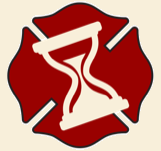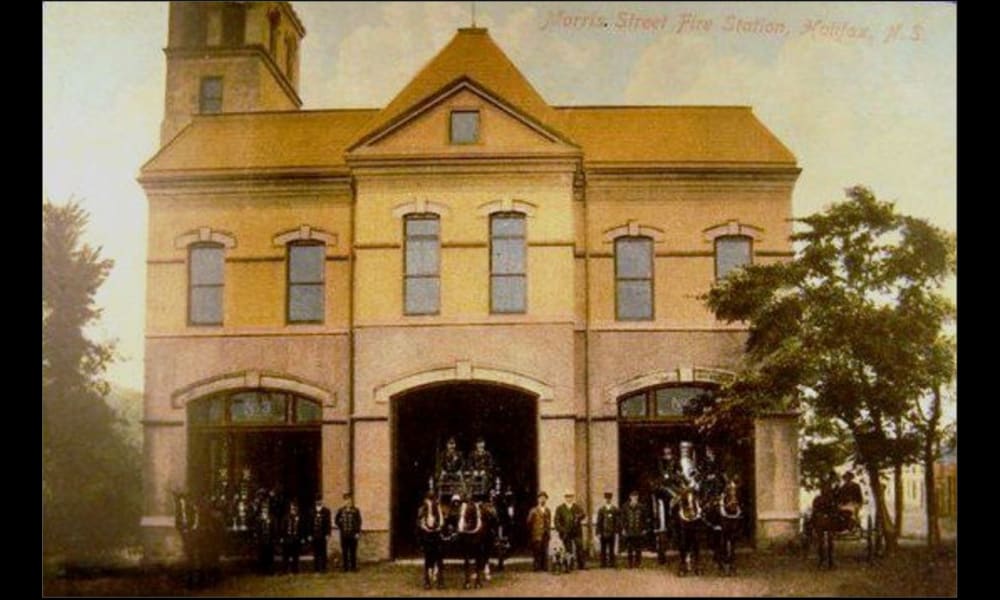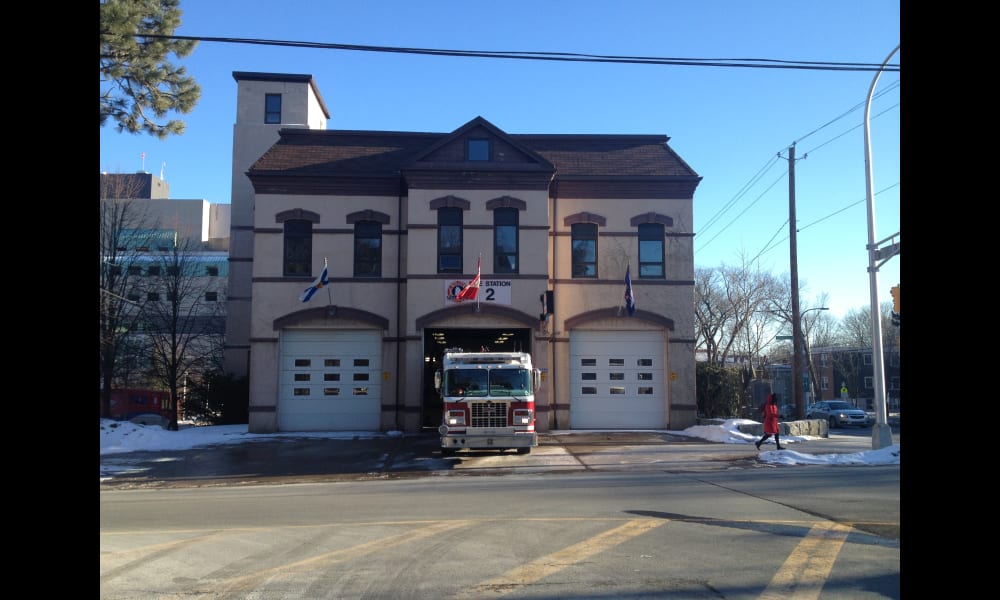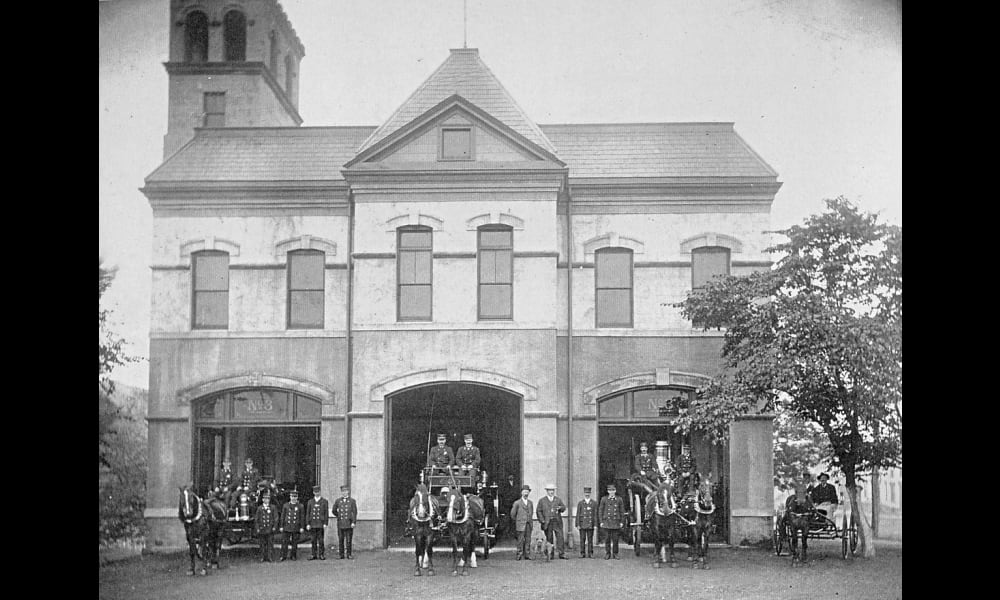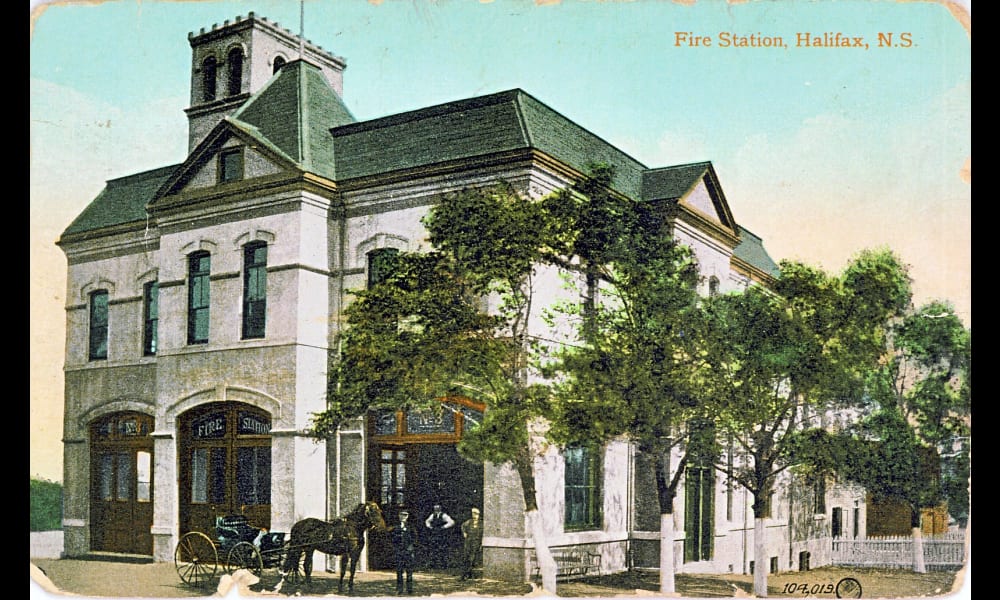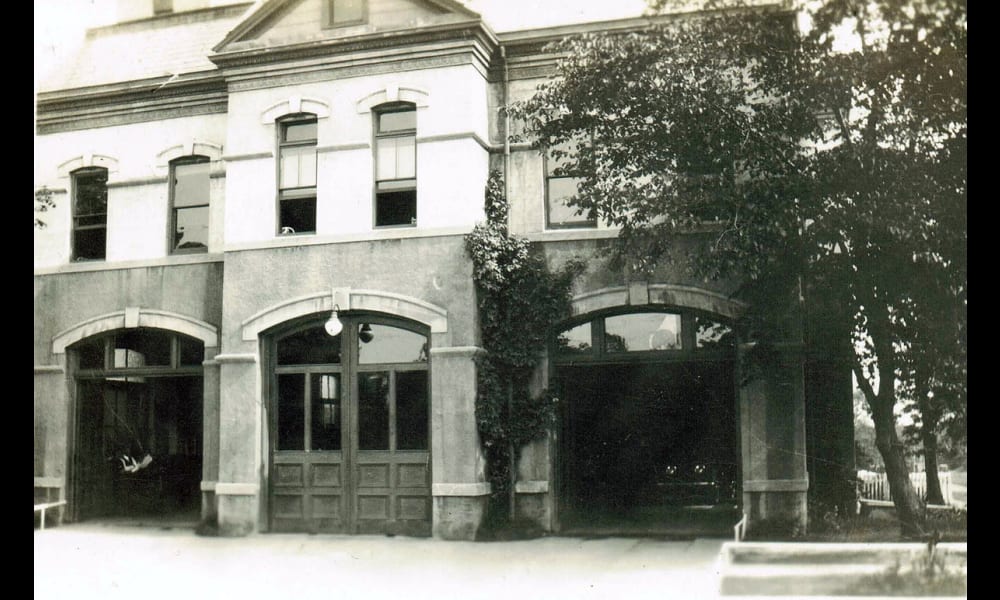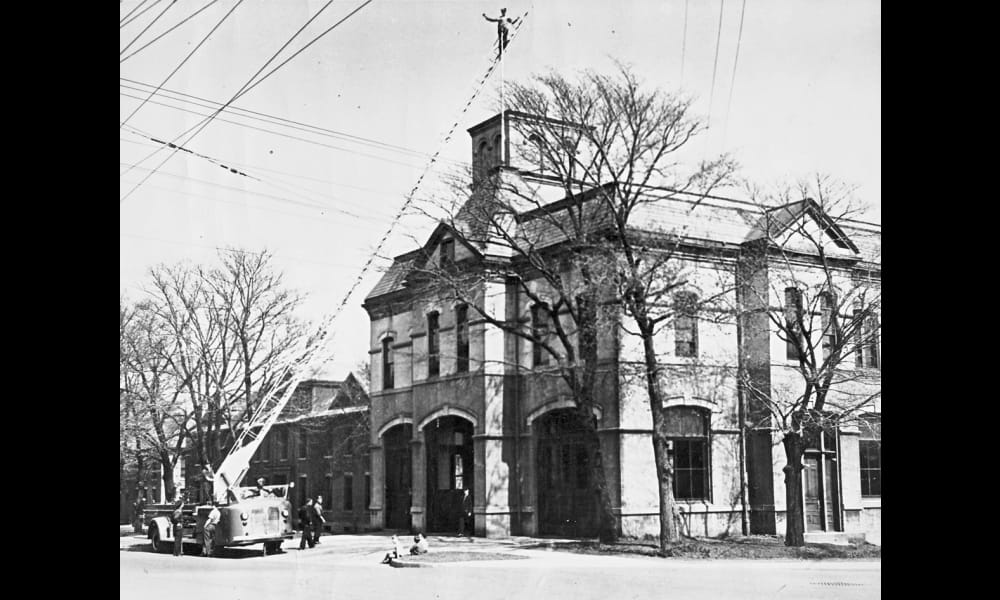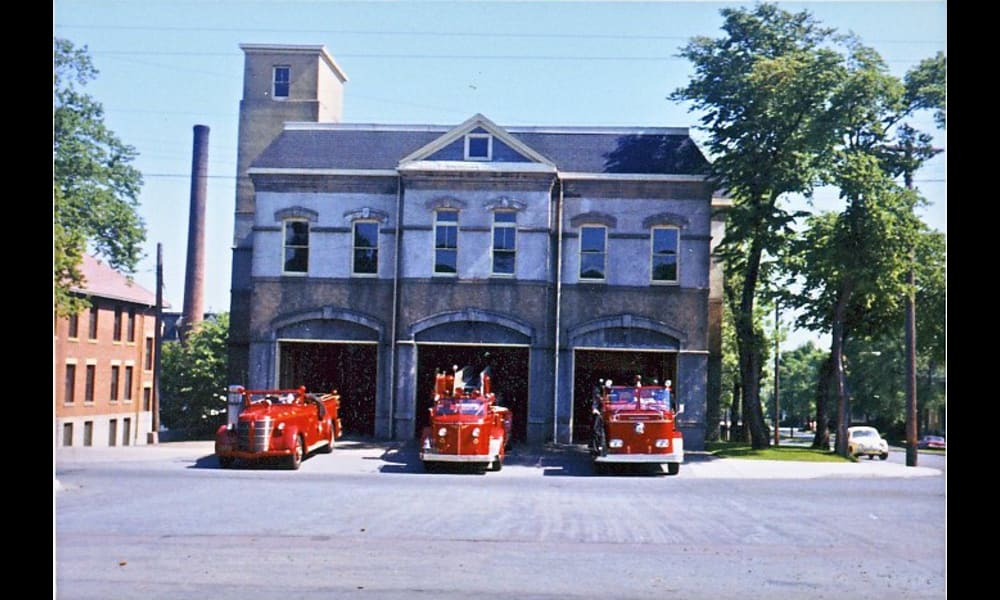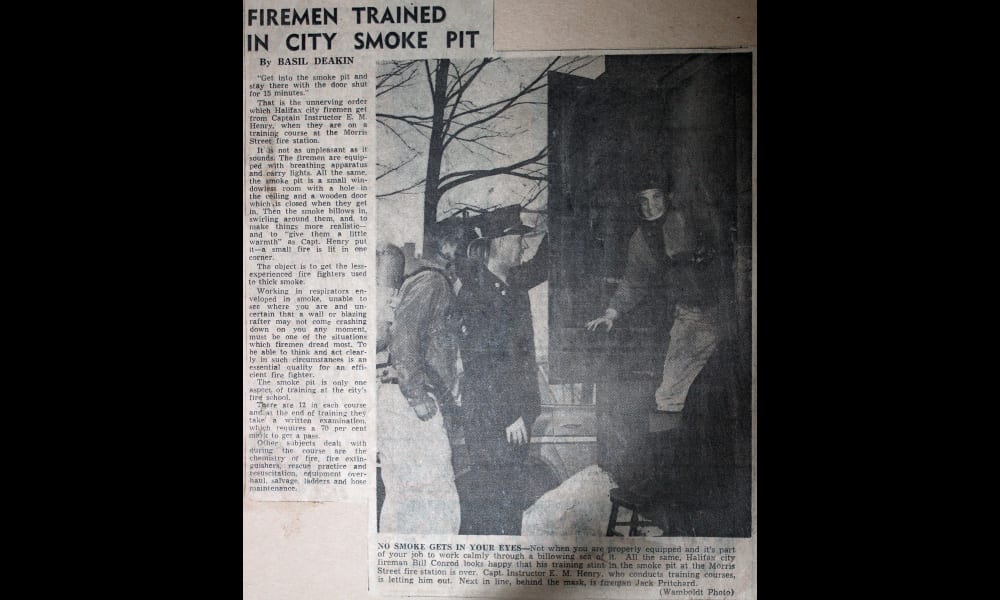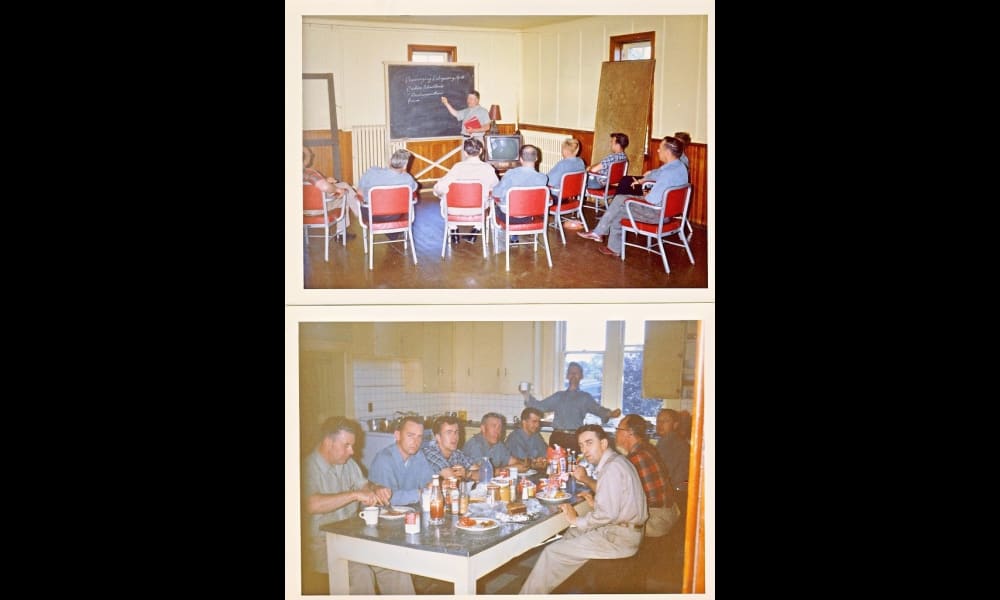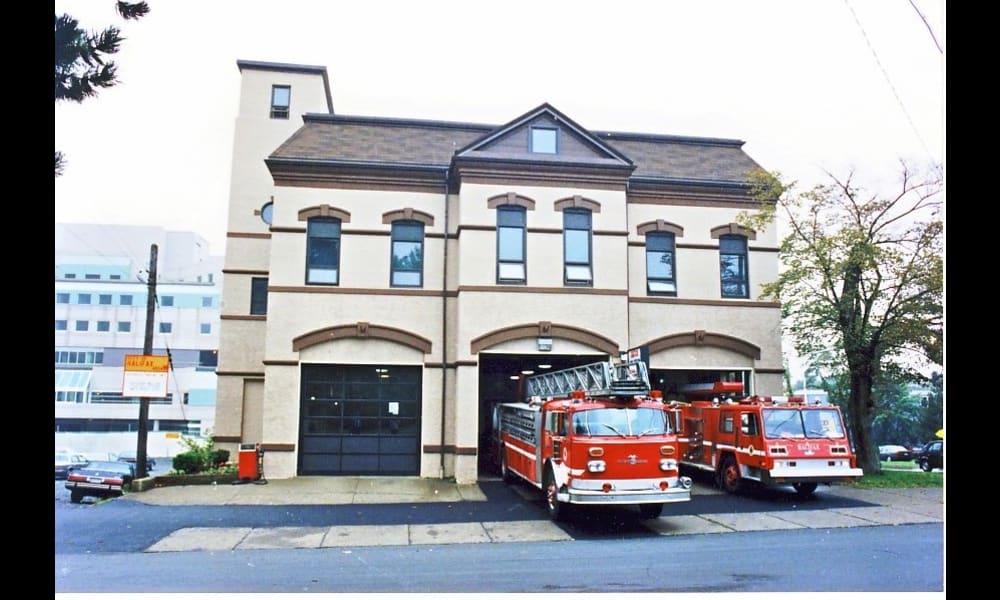Morris Street Engine House – Halifax, Nova Scotia
The Morris Street Engine House, now designated as Fire Station No. 2, stands at the southeast corner of Robie Street and what was once known as Morris Street—today University Avenue. Completed in 1908, the station represents a defining moment in Halifax’s firefighting history, both architecturally and operationally.
This location was carefully selected after considerable debate to replace the aging Queen Street Engine House. The site marked a strategic advancement in the city’s fire protection planning, reflecting the growth and shifting needs of the community in the early 20th century.
The responsibility for the station’s design was entrusted to William B. Fidler, a Firefighter and Engineer within the Halifax Fire Department. Known for his dual expertise in carpentry and engineering, Fidler had previously demonstrated his capabilities and was once again called upon to produce plans for this new facility. His design led to the acceptance of a $17,616.00 tender submitted by George B. Low, a prominent figure in Halifax’s early use of reinforced concrete construction.
The Morris Street Engine House would ultimately be the last fire station in Halifax built specifically to accommodate horse-drawn apparatus, marking the end of an era in fire service operations.
Of notable interest in this project was a compensation dispute involving Fidler’s architectural fees. Standard practice at the time dictated that architects were to receive 2.5% of the contract value, payable upon completion. However, since Fidler was already employed and salaried as a city engineer, the City initially refused to pay the architectural fee. It was only after the intervention of the Fire Chief, who asserted that Fidler had performed all design work independently and while off duty, that the City relented and granted Fidler the full amount due—a testament to the professionalism and dedication of early Halifax fire personnel.
Construction of the building was formally completed on March 19, 1908, and the engine house was officially opened—a facility that, impressively, continues to operate over a century later.
The structure itself, designed in the Edwardian style with modest classical detailing, features a symmetrical façade, a prominent mansard roof, and a central gable bay facing University Avenue. Arched concrete surrounds above doors and windows give the station a distinctive character. These design elements not only serve aesthetic purposes but also speak to the transition between architectural traditions of the 19th and 20th centuries.
Now a municipally designated heritage property, the Morris Street Engine House remains a proud symbol of Halifax’s enduring fire service tradition. It also serves as an informal custodian of local fire history, with artifacts and photographs preserved through the efforts of the Halifax Fire Historical Society.
Taken from The Evening Mail, February 29th 1908
OPENING OF THE MORRIS STREET ENGINE HOUSE.
The "assembly" opening the new Morris street engine house is going to be a memorable one, if the strenuous efforts of a capable committee are rewarded. This committee, who have worked indefatigably for that result, is as foilows:
--District Chief William Brunt, chairman;
Lieutenant James Keefe. secretary, No. 4 hose:
Chief P. J. Broderick, President Firemen's Benefit Association;
District Chief D. liealy:
Captain R. Stone, engine No. 2:
Captain J. Whalen, engine No. 4;
Captain J. Wells, hose No. 4:
Captain W. Howley, engine No. 1:
Captain J. Lewin, engine No. 5:
Lieutenant J. Churchill, engine No. 5:
William Fidler, engineer chemical No. 2:
Allen Druhan, engineer engine No. 2;
James Myers, commander ladder No. 2;
William Broderick, engine No.4;
James Lynch, engine No, 4;
Albert Brunt, engine No. 3;
John Bishop. engine No. 2:
William Heals, engine No. 1.
The honorary guests at the function will be the following:
-Mayor Mac-Ireith. Aldermen Johnson, Archibaia, Taylor. Hubley, Campbell, and Hayward, F. L. Monaghan, Chief of Police Rudland, Ex-Mayor Crosby, Px-Alderman Powell, Chief Kerr, St.John; Harry Irvin, secretary, St.John; Chief Stuart. Truro: Captain Waddell, Dartmouth; Captain Hiltz, Dartmouth U.P.C.; Captain Garde, Dartmouth Ladder Co.: Captain Hoyt, Halifax U.P.C.; Captain Berrigan, Halifax U.E.C.: L. L. Libby. Halifax; B. J. Fahie, secretary Board of Fire Underwriters.
McNally's orchestra will be present and furnish an excellent musical pro-gramme.
The committee have prepared programmes embellished with excellent photographs of Chief Broderick, District Chief Doninick Healy and District Chief William Brunt.
Taken from The Evening Mail, March 3rd 1908
Fire Laddies and Guests Enjoyed a Dance in the New Morris Street Station
The New Engine House in All Respects a Splendid One—A Large Gathering Partook of the Hospitality of the Firemen and Declared the Function a Most Enjoyable One.
"Station No. 3," Halifax Fire Department, is now open. Station No. 3 is the handsome new engine-house at the corner of Morris and Robie streets. That the stalwart men of our Fire Brigade are as satisfactory in the capacity of hosts as in that of "fire extinguishers," all their last night's guests will testify.
The new house, for which William Fiddler, chemical engineer, was the architect, is a monumental proof of the fact that Mr. Fiddler understands precisely what is necessary to perfectly meet the needs of firemen—it has nice stalls: Its apparatus for landing credit to the community from every point of view.
A LOOK OVER THE NEW HOUSE
Suggesting from the outside stability preeminently, if you walk in and have a look around, you will be greatly pleased-if you are intérested in the fire-fighting men, you will be pleased, and li you are Interested in humane and proper housing of splendid "working" horses you will be pleased--the clean, spacious stable, with its sweet smell of fresh, clean hay, and its eight the horse feed, hay, oats, and bran is alone worth a visit. In the big engine room hangs the new “gong indicator“. The uninitiated must be told that simultaneously with the striking of the alarm by the gong, the number, indicating the precise location of the fire is “lifted“ so that the counting of the strokes is superfluous.
Upstairs are the fireman‘s sleeping room – big, well lighted, and well ventilated: the reception room, the reading room, the parlor; the engineers room, the captains rooms; lockers for each of the fireman; lavatories.
The wood used in the building is spruce; it is lighted throughout with a beautiful system of electric lights; is heated perfectly throughout and a very important fact in connection with the heating apparatus is that there is one source of supply only for both domestic use and the engines.
Engineer fiddler explained this with natural pride yesterday afternoon to a representative of the Mail.
The Decoration of the Ballroom
Yesterday, throughout the day, chief Broderick, and the gentleman of the committee, whose names were given in the mail on Saturday afternoon, were hard at work, directing the decorations of the building, and especially of the big engine room in which the dancing was to take place. Their efforts had a liberal reward in the general expressed appreciation of their guests in the evening.
At the north side of the room was the platform, upon which sat the musicians – those of McNally’s Orchestra:
P. McNally, violin:
E Lawrence, piano:
C. Keating, flute:
E McLaughlin, Cornett:
George T Bates, Floor Director.
Over the platform was an arch of white roses, surrounded by the figure of a fireman.
To the right and left were smaller arches of white, in which appeared respectively in blue and gold – “The Enemy, We Conquer“ and “We Live to Save“. From each arch was suspended a signal light and a Seagrave set supplied effective and typical embellishment just above the platform. Along its base were different articles of the fireman’s equipment – axes, spanners, branch pipes, etc.
To the right of the platform, “ as large as life “ appeared a picture of Chief Broderick, and to the left – not quite as large as life, was another of Alderman Johnson, chairman of the Board of Fire Commissioners.
Below each picture was suspended a trumpet. The walls of the room were fully decorated with bannerettes.
Over the door leading to the supper room where the letters “H. F. D.“ In coloured electric lights. The mirror lights hanging from the ceiling prescribed a regular illumination – they lighted up one of the most successful , one of the jolliest dances ever given in Halifax.
The Music Program
The names of the honorary guests have already been published in the Mail. There were several hundred present, including a remarkably large number of very pretty girls and of graceful dancers.
The program of dances was as follows:
Waltz
Lancers quadrille
Mazurka
Two step
Polka quadrille
Waltz
Militaire
Caledonia quadrille
Two step
Waltz
Lancer quadrille
Schottische
Mazurka
Medley quadrille
Intermission
Polka quadrille
Two step
Militaire
Le Pasterine
Waltz quadrille
Two step
Waltz
God Save The King
The menu for the evening beautifully served, in what is to be the sleep room on the second floor, was as follows:
Meats
Hot roast, dressed turkey
Cranberry sauce
Dressed fillet, sirloin, beef, boiled ham, corned, tongue, and beef.
Vegetables
Potatoes, peas, turnips,
Pastry
Apple mince and assorted fruit pies
Confectionary
Nuts, raisins, chocolate, creams, and assorted candy.
Fruit
Apples, oranges, bananas and grapes.
Cheese and crackers
Parker house rolls, brown bread, and butter
Pickles, sauces, tea, and coffee
Altogether the “assembly” marked worthy in every way the opening of “station three” and up upon its complete success the committees are to be heartily congratulated.
In the list of the committee of arrangements published in the souvenir program, the name of Chief engineer Condon was inadvertently omitted.

